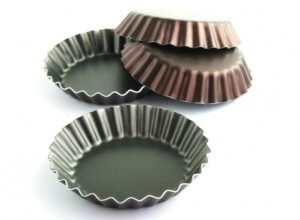Gluten-Free Flour Baking Basics
 Is it your first time diving into the world of gluten-free baking? In the beginning, it can feel intimidating or limiting, but it gets a lot easier (and a lot more fun!) once you know all the ins and outs of gluten-free flours. That’s where Nuts.com comes in! We’re going to give you all the tips you’ll need to do you’re gluten-free baking with ease. Let’s start by highlighting our favorite gluten-free flours.
Is it your first time diving into the world of gluten-free baking? In the beginning, it can feel intimidating or limiting, but it gets a lot easier (and a lot more fun!) once you know all the ins and outs of gluten-free flours. That’s where Nuts.com comes in! We’re going to give you all the tips you’ll need to do you’re gluten-free baking with ease. Let’s start by highlighting our favorite gluten-free flours.
Types of Gluten-Free Flour
1. Gluten-Free All-Purpose Baking Flour
Our gluten-free all-purpose baking flour is a mix of different types of gluten-free flours, designed for as many uses as possible. You can use this flour to make bread, muffins, cakes, and more! This simple flour is the perfect go-to gluten-free flour.
2. Organic Coconut Flour
Our organic coconut flour‘s reputation is that it is just as tasty as wheat flour (if not even tastier). This gluten-free flour can be substituted for up to 20% of the wheat flour in a recipe, and many recipes use this mildly sweet flour as a base. As an added bonus, this savory flour is low in carbohydrates and high in fiber and protein.
3. Almond Flour
As you may guess by the name, almond flour only consists of grounded up blanched almonds. This gluten-free flour is also referred to as almond meal. This particular flour is especially flavorful as its nutty taste works with many other foods. It’s easy to use, and produces baked goods that are especially light and moist.
Tips and Tricks
1. Mix up your flours.
To make your gluten-free baked goods taste like the real thing, it’s important that you use a variety of different gluten-free flours. For example, our gluten-free all-purpose baking flour is a mix of garbanzo bean flour, potato starch, tapioca flour, gluten-free sweet white sorghum flour, and fava bean flour.
2. Use gum.
To mimic the texture of gluten, you’ll need something to replace it. That’s where xanthan gum and guar gum come into play. These will add thickness and volume to your gluten-free goodies.
 3. Use containers with walls.
3. Use containers with walls.
Gluten helps give baked goods their shape, so when you bake without it, your baked goods aren’t going to hold as well. Make sure you use pans with walls so that your gluten-free baked goods mold correctly!
4. Make it smaller.
Gluten-free goodies crumble and break easily because they’re more moist. You can prevent this by making everything in small pans. Plus, aren’t mini baked goods just the cutest?
Do you have any gluten-free baking tips to share? Be sure to share them with us!

Leave a Reply